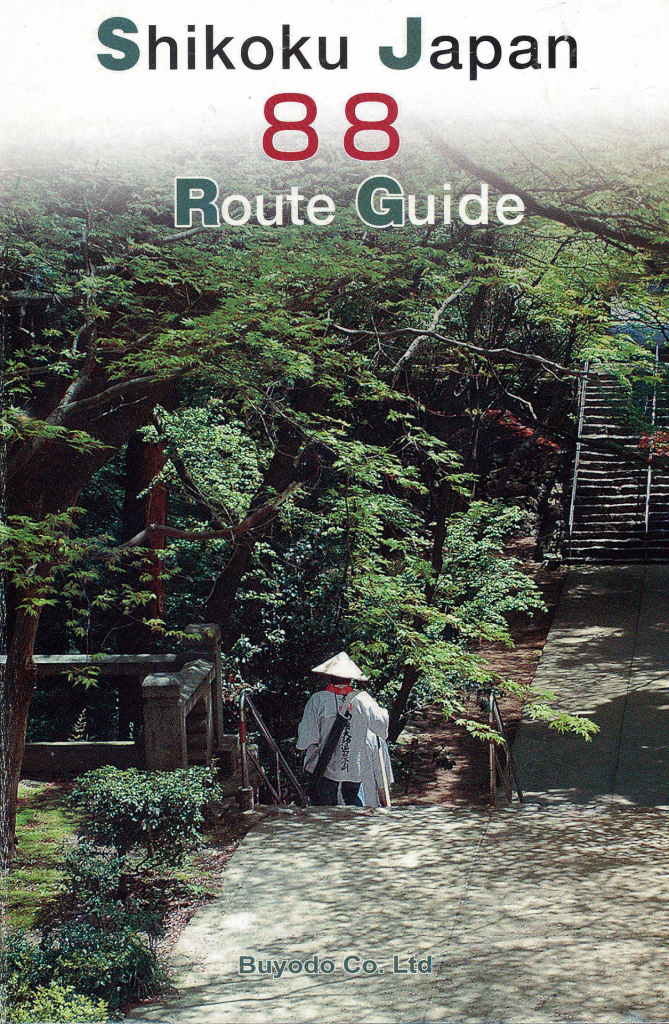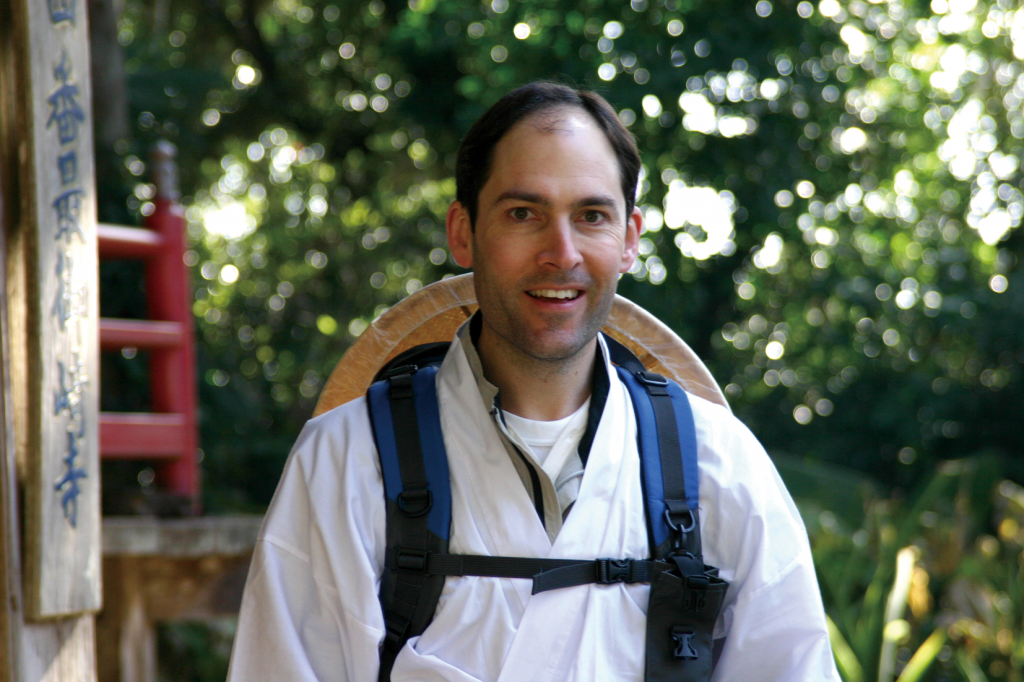
Shikoku, the smallest of the four main Japanese islands, is often left off the tourist trail. Awa-Odori, Tokushima’s pulsating summer dance festival, and the soothing waters of Dogo Onsen in Matsuyama (reputedly Japan’s oldest hot spring) are fairly well-known attractions, but the number 88 is another great reason to go.
The significance of this number is revealed in the new English-language book, “Shikoku Japan 88 Route Guide.” Eighty-eight, in fact refers to the number of temples that make up the Buddhist pilgrimage around Shikoku. Inspired by Kobo Daishi (also known as Kukai), the accredited founder of the journey, pilgrims clad in white (known as O-henro-san) circumambulate the scenic island from one temple to the next.
Some temporarily discard their everyday lives to walk the entire route which covers a distance of approximately 1,400 kilometers, if the additional 20 bangai (alternative) temples are included. Others utilize transport—private or public—traveling alone or in groups to complete the pilgrimage when time allows.
In recent years, the number of pilgrims—including foreigners—has steadily increased. With these foreign visitors specifically in mind, Buyodo Co. Ltd. has published the handy “Shikoku Japan 88 Route Guide.” The guide was preceded by a free English poster-map of the pilgrimage (order online at www.shikokuhenrotrail.com). The Shikoku Tourist Promotion Association generously provided funding for the book assisted by the YOKOSO! Welcome to Japan campaign.
The guide is primarily a map book, based on the most popular map Japanese guide, “Shikoku Henro Hitori Aruki Dōgyō Ninin” (Traveling with Kobo Daishi: The Shikoku Pilgrimage for Single Walkers). The maps provide detailed information in English, the history behind each temple and nearby tourist destinations.
In addition to the route guide, there’s also extensive information for those uninitiated in the ways of the O-henro-san pilgrim. From correct attire to proper temple etiquette, plus a comprehensive glossary, there is plenty of information to help you join the O-Henro-san ranks without inadvertently embarrassing yourself.

The book’s project consultant and main translator is David C. Moreton, a Canadian who first came to Japan in 1988. His interest in the Shikoku Pilgrimage developed while exploring the prominence of Kobo Daishi in Japanese folklore while on student exchange at Ritsumeikan University in Kyoto.
After realizing nearly no non-Japanese were studying the pilgrimage, David wrote “An Examination of Charitable Giving Along the Shikoku Pilgrimage Route” for his Master’s Degree dissertation.
One of the great things about the Shikoku pilgrimage, according to David, is there are no fixed rules. You don’t need to be a Buddhist or even religious to become a pilgrim. You don’t even need to wear the all-white pilgrim attire if you don’t want to (though you won’t be treated as a henro). But if you intend to do the pilgrimage, he suggests you should be willing to respect and learn about its religious history and culture.
Since moving to Tokushima in 2001, David has met dozens of foreign henro wanting more information in English on the pilgrimage. “Shikoku Japan 88 Route Guide” was created with the intent of promoting the pilgrimage, so more people can experience it.
“Shikoku Japan 88 Route Guide” is available at Ryozen-ji, (Temple 1) and will soon be on sale at Kinokuniya Bookstores, Yaesu Book Center (Tokyo) and on Amazon.com. It’s also available at Buyodo’s homepage at
www.buyodo.co.jp. Price: 1,524 plus tax.




